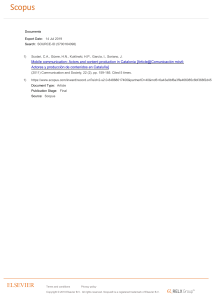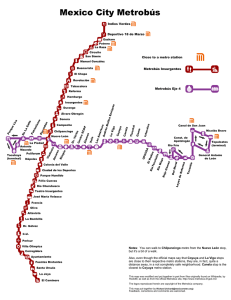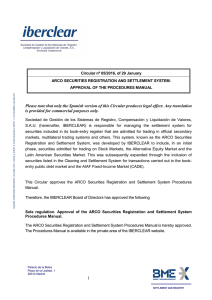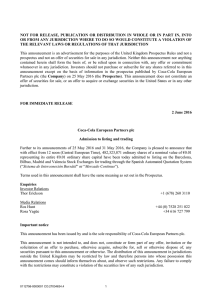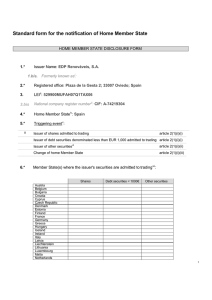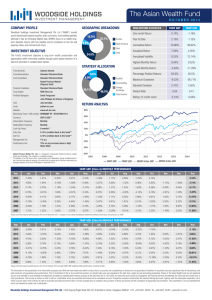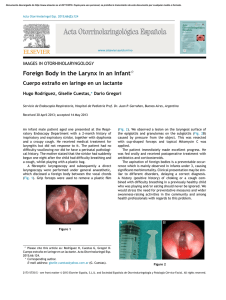In this issue
Anuncio
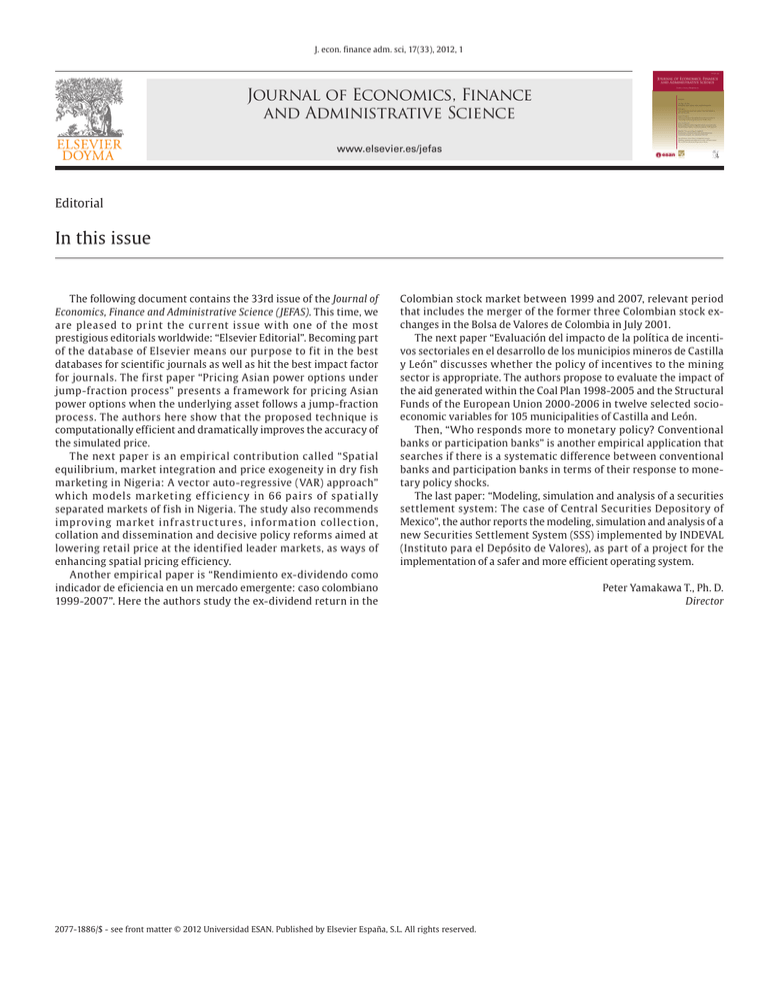
J. econ. finance adm. sci, 17(33), 2012, 1 ISSN 2077-1886 Journal of Economics, Finance and Administrative Science Volume 17, Issue 33, December 2012 Journal of Economics, Finance and Administrative Science Articles Bin Peng & Fei Peng Pricing Asian power options under jump-fraction process Fatih Macit Who responds more to monetary policy? Conventional banks or participation banks Sergio A. Berumen Evaluación del impacto de la política de incentivos sectoriales en el desarrollo de los municipios mineros de Castilla y León Taiwo E. Mafimisebi Spatial equilibrium, market integration and price exogeneity in dry fish marketing in Nigeria: A vector auto-regressive (VAR) approach Elizabeth T. Arroyave & Diego A. Agudelo R. Rendimiento ex-dividendo como indicador de eficiencia en un mercado emergente: caso colombiano 1999-2007 David F. Muñoz, Arturo Palacios & Miguel de Lascurain Modeling, simulation and analysis of a securities settlement system: The case of Central Securities Depository of Mexico www.elsevier.es/jefas Editorial In this issue The following document contains the 33rd issue of the Journal of Economics, Finance and Administrative Science (JEFAS). This time, we are pleased to print the current issue with one of the most prestigious editorials worldwide: “Elsevier Editorial”. Becoming part of the database of Elsevier means our purpose to fit in the best databases for scientific journals as well as hit the best impact factor for journals. The first paper “Pricing Asian power options under jump-fraction process” presents a framework for pricing Asian power options when the underlying asset follows a jump-fraction process. The authors here show that the proposed technique is computationally efficient and dramatically improves the accuracy of the simulated price. The next paper is an empirical contribution called “Spatial equilibrium, market integration and price exogeneity in dry fish marketing in Nigeria: A vector auto-regressive (VAR) approach” which models marketing ef f icienc y in 66 pairs of spatially separated markets of fish in Nigeria. The study also recommends improv ing market infrast r uc t ures, infor mat ion collec t ion, collation and dissemination and decisive policy reforms aimed at lowering retail price at the identified leader markets, as ways of enhancing spatial pricing efficiency. Another empirical paper is “Rendimiento ex-dividendo como indicador de eficiencia en un mercado emergente: caso colombiano 1999-2007”. Here the authors study the ex-dividend return in the Colombian stock market between 1999 and 2007, relevant period that includes the merger of the former three Colombian stock exchanges in the Bolsa de Valores de Colombia in July 2001. The next paper “Evaluación del impacto de la política de incentivos sectoriales en el desarrollo de los municipios mineros de Castilla y León” discusses whether the policy of incentives to the mining sector is appropriate. The authors propose to evaluate the impact of the aid generated within the Coal Plan 1998-2005 and the Structural Funds of the European Union 2000-2006 in twelve selected socioeconomic variables for 105 municipalities of Castilla and León. Then, “Who responds more to monetary policy? Conventional banks or participation banks” is another empirical application that searches if there is a systematic difference between conventional banks and participation banks in terms of their response to monetary policy shocks. The last paper: “Modeling, simulation and analysis of a securities settlement system: The case of Central Securities Depository of Mexico”, the author reports the modeling, simulation and analysis of a new Securities Settlement System (SSS) implemented by INDEVAL (Instituto para el Depósito de Valores), as part of a project for the implementation of a safer and more efficient operating system. 2077-1886/$ - see front matter © 2012 Universidad ESAN. Published by Elsevier España, S.L. All rights reserved. Peter Yamakawa T., Ph. D. Director

